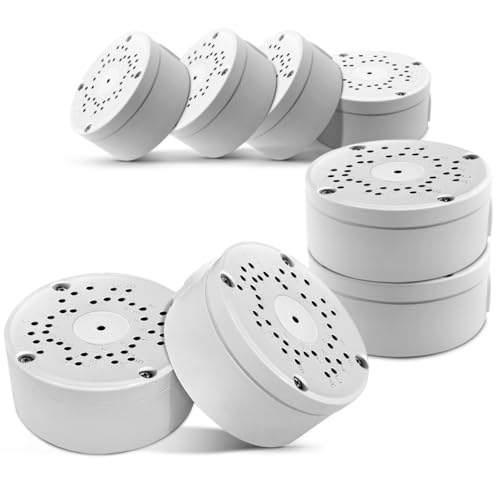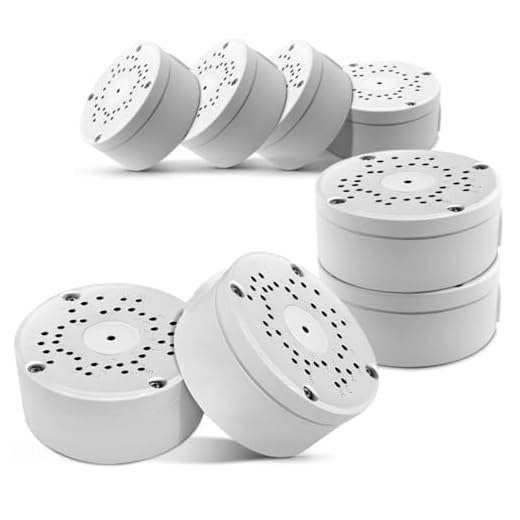




In today’s world, security cameras play a crucial role in ensuring safety and surveillance in various settings, including homes, businesses, and public spaces. Manufacturing security cameras requires a combination of advanced technology, precision engineering, and quality control processes to deliver reliable and high-performance devices.
Design and Development: The first step in manufacturing security cameras is the design and development phase. Engineers and designers work together to create the specifications and features of the camera, taking into account factors such as resolution, field of view, connectivity options, and weather resistance.
Component Selection: Once the design is finalized, the next step is to select the components that will be used in the camera. This includes sensors, lenses, image processors, housings, and mounting hardware. Each component is carefully chosen for its quality, performance, and compatibility with the overall design.
Understanding Security Camera Manufacturing Process
Manufacturing security cameras involves a series of intricate processes to ensure high-quality products that meet industry standards. Here is an overview of the typical steps involved in the manufacturing process:
1. Design and Planning
The first step in manufacturing security cameras is designing and planning the product. This involves determining the specifications, features, and functionality of the camera. Design engineers create detailed drawings and specifications that guide the manufacturing process.
2. Component Procurement
Once the design is finalized, the next step is to procure the necessary components for the security cameras. This includes sourcing camera lenses, image sensors, housings, circuit boards, and other electronic components from trusted suppliers.
- Camera lenses
- Image sensors
- Housings
- Circuit boards
- Electronic components
Quality control is essential during this stage to ensure that all components meet the required specifications and standards.
…
Researching Camera Components
Before manufacturing security cameras, it is essential to research the components that make up the camera. Understanding the different parts and their functions will help in designing a high-quality product that meets industry standards.
- Image sensor: The image sensor is the heart of the camera and determines the quality of the images captured. Research different types of image sensors such as CMOS and CCD to find the best option for your security camera.
- Lens: The lens plays a crucial role in capturing clear and sharp images. Research different lens types, focal lengths, and apertures to choose the most suitable lens for your security camera.
- IR cut filter: An IR cut filter helps in improving the quality of images by blocking out infrared light. Research the different types of IR cut filters available in the market to ensure optimal performance.
- Processor: The processor is responsible for processing the image data captured by the camera. Research different processors to find one that offers fast and efficient processing capabilities.
- Enclosure: The camera enclosure protects the internal components from environmental factors. Research durable and weatherproof enclosure materials to ensure long-term durability of your security camera.
By thoroughly researching camera components, you can design and manufacture security cameras that deliver high-quality images and reliable performance.
Designing Camera Housing
One of the key components of a security camera is its housing, which protects the sensitive electronics inside from environmental elements. When designing the camera housing, several factors need to be considered:
| Material: | Choose a durable and weather-resistant material such as aluminum or polycarbonate for the housing to ensure longevity and protection. |
| Size and Shape: | The housing should be designed to accommodate the camera components and provide ample space for adjustments and maintenance. |
| Mounting Options: | Consider different mounting options such as wall mount, ceiling mount, or pole mount to ensure flexibility in installation. |
| Weatherproofing: | Include weatherproof seals, gaskets, and protective coatings to prevent water and dust ingress, making the camera suitable for outdoor use. |
| Aesthetics: | Design the housing to be aesthetically pleasing and blend with its surroundings, especially for installations in public spaces. |
By carefully considering these factors during the design process, manufacturers can create reliable and effective camera housings that enhance the performance and durability of security cameras.
Testing Camera Functionality
Before security cameras are released to the market, rigorous testing is essential to ensure their functionality and reliability. Here are some key steps in testing camera functionality:
1. Image Quality Testing: Verify that the camera produces clear and high-quality images in various lighting conditions.
2. Motion Detection Testing: Test the camera’s ability to detect motion accurately and timely.
3. Night Vision Testing: Evaluate the camera’s night vision capabilities by testing its performance in low-light or dark environments.
4. Connectivity Testing: Ensure that the camera can connect to the network seamlessly and maintain a stable connection.
5. Remote Access Testing: Test the camera’s remote access functionality to ensure users can view live footage and control the camera remotely.
By conducting thorough testing, manufacturers can guarantee that their security cameras meet the highest standards of performance and reliability.
Assembling Camera Parts
Once all the individual components have been manufactured, the assembly process can begin. The camera body is usually assembled first, followed by the lens, sensor, and other internal components. Special care is taken to ensure that each part is securely attached and properly aligned.
After the internal components are in place, the outer casing is attached, along with any protective covers or mounting brackets. Quality control checks are performed at each step to ensure that the camera is functioning correctly and that all parts are properly installed.
Finally, the camera is tested to ensure that it is capturing images and video as expected. Any adjustments or fine-tuning needed are made at this stage before the camera is packaged and prepared for shipping.
Programming Camera Software
Once the hardware components of the security camera are assembled, the next crucial step is programming the camera software. This software is responsible for controlling the camera’s functions, such as motion detection, video recording, and remote access.
To program the camera software, developers typically use programming languages like C++, Python, or Java. They write code that interfaces with the camera hardware to capture and process video streams, detect motion, and store footage securely.
Key considerations for programming camera software:
- Implementing algorithms for motion detection and tracking
- Integrating with cloud storage services for remote access
- Ensuring data encryption and security protocols
By carefully designing and testing the camera software, manufacturers can create a reliable and efficient security camera system that meets the needs of their customers.
Packaging and Shipping
Once the security cameras are manufactured, they need to be carefully packaged to ensure they reach customers in perfect condition. Each camera is securely placed in a protective box with foam padding to prevent any damage during transportation. The packaging is designed to be compact and lightweight to reduce shipping costs.
After packaging, the security cameras are shipped to distribution centers or directly to customers. Shipping methods vary depending on the destination, with options for standard ground shipping or expedited air shipping. Tracking numbers are provided to customers so they can monitor the progress of their orders.
Efficient packaging and shipping processes are crucial in delivering high-quality security cameras to customers worldwide.
Quality Control Measures
Quality control is vital in the manufacturing process of security cameras to ensure their reliability and performance. Several measures are implemented to maintain high standards:
1. Component Testing
Each component used in the security camera is rigorously tested for quality and functionality before assembly. This includes testing sensors, lenses, circuit boards, and casing materials to ensure they meet specifications.
2. Assembly Line Inspections
Regular inspections are conducted along the assembly line to check for any defects or errors in the assembly process. This helps identify and rectify issues early on to prevent faulty cameras from reaching the market.
Final Testing: Once the security cameras are fully assembled, they undergo comprehensive testing to verify their functionality, image quality, and durability. This final testing phase ensures that only high-quality cameras are shipped to customers.






